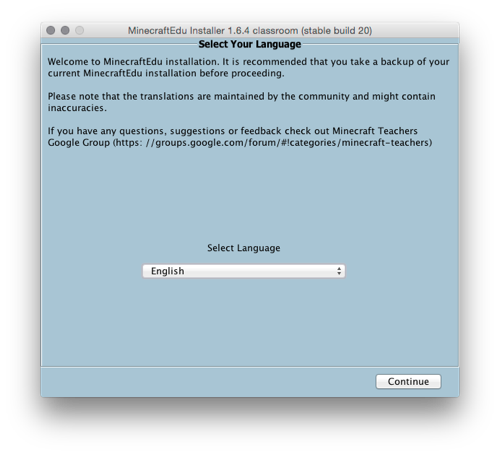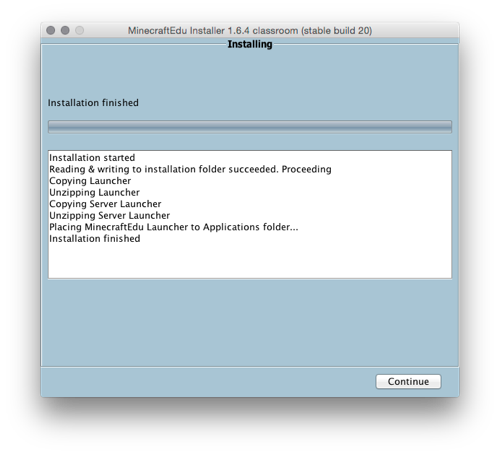Abstract
Minecraft EDU: Educational gaming platform taught to the future world
Abstract
The world of education is evolving beyond the book, the chalkboard, and the in-class essay. That isn’t to say that these educational devices are defunct, quite the opposite! The traditional model of education has been successful, and will be successful in education people in the classics of education. However, today is a time of rapidly evolving knowledge, particularly in the field of computer science. Because of this, teachers and students are encountering obstacles that the traditional world of education has not encountered yet, or perhaps will never encounter. Knowledge like computer programming is highly academic in the traditional sense of the word: there is a rote component, a finite base of knowledge, and a set standard of methods and products. Teaching these aspects of programming is not the problem, for the difficulty of instructing programming is preparing students for problems that no one person can present, teaching the intuition and the expertise that allows a programmer to see something that has never been seen by human eyes, or to find a solution that no one in human history had yet thought of. Because of this component of novelty, I have decided to dedicate this year to the study of one such method that hopes to breach the gap between traditional “read-write-repeat” educations. That is education through gaming.
Why an educational gaming platform?
Fluid intelligence, regardless if it is called creativity, expertise, experience, intuition, or a hunch has been praised throughout the history of education. With the rapid growth of technology racing the abilities of the human mind, not only does the education system prepare students for fluid thinking, there must be a component of fluidity to the method of education. Minecraft EDU, a Minecraft computer game platform created by Teacher Gaming, offers a teacher the opportunity to convey knowledge in an interactive, free form environment that is not limited by the innate talents of the teacher or the coursework. Computer science, specifically interacting in a virtual world, programming to create those worlds, and navigating an increasingly technological world, has now become a vital part of the traditional sense of literacy. In an attempt to convey foundational computer science skills with long-lasting impressions of discovery and fun, I will be teaching using the Minecraft EDU program and a independently-developed curriculum.
How do you measure gaming?
Students will be consistently measured against three criteria: Function, Component Use, and Creativity. The adjustment of these three primary areas of measure will occur with each assignment. Function is defined as the assignments successful completion of the prompted task. For example, a student is tasked with building a circuit that turns on a light. If the circuit completes this task, that student will receive credit. Component Use references the skilled application of the concepts introduced during class. If a student is asked to build a light that flashes via a clock circuit, using a clock circuit will receive credit. Finally, Creativity is assessed as the students ability to pursue novel solutions not presented during class. For each assignment, I will assist the students by building a demonstration model that presents one solution to the prompt. Creativity is earned when a student discovers an alternative solution, or improves upon the current solution.
The tools for success
- The necessary resources for this Minecraft EDU class are:
- Enough Laptops or computers to allow individual access by all members of the class
- A single server machine, either a laptop, computer, or server blade, to host the Minecraft EDU classroom
- A curriculum developed to integrate gaming into the presentation of a pre-determined base of knowledge
- A working knowledge of Minecraft the game
- A working knowledge of Minecraft EDU the platform
- Real-world applications and examples to augment the virtual presentations
Impact on a individual, local, and global stage
Game based education is gaining momentum in academia because it plays to the fluid, interactive, and creative side of learning. At HPA, the Minecraft EDU class represents a fundamental shift in the way knowledge is presented, constituting the first time a course has ever been taught almost exclusively within the context of a game and by a student. This class acts as a model for future education styles, as well as the first iteration of an ongoing process to improve education with new methods. Not only does this class aim to serve the students, it provides a foundation on which other educational alternatives can be explored. On the larger stage, HPA joins a community of thinkers around the world taking new approaches towards academics in the race to make literate the world of computer users.
What happens after?
This course is driven primarily by the enthusiasm and dedication of the instructor. Because there is very little material that exists to fall back on, new and creative activities and solutions are a daily requirement when teaching this class. For that reason, I have chosen my top students to continue working in the field of computer science in hopes that they will teach this course after my time at HPA has elapsed. I am placing these students in a teachers assistant position, enabling them to explore their styles of instruction as well as their areas of discomfort or improvement in the field of teaching. I hope to educate these individuals, as well as others, such that Minecraft in school does not leave with a single individual, but rather endures to become an essential part of the HPA educational experience.
 Pressing continue will bring up the next screen, asking to what extent you wish to instal the game. For game clients (users), only the "Place MinecraftEdu Launcher in Applications" box can be ticked. Administrators will want to install the "MinecraftEdu Server Launcher" as well. This allows you to host a server on your machine. Pressing continue again will begin the formal download. Afterwards, clicking the "Open 'Getting Started' Page" tab will walk you through setting up your
Pressing continue will bring up the next screen, asking to what extent you wish to instal the game. For game clients (users), only the "Place MinecraftEdu Launcher in Applications" box can be ticked. Administrators will want to install the "MinecraftEdu Server Launcher" as well. This allows you to host a server on your machine. Pressing continue again will begin the formal download. Afterwards, clicking the "Open 'Getting Started' Page" tab will walk you through setting up your 